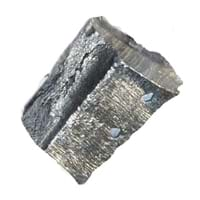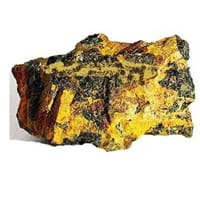Neodymium vs Polonium
Periodic Table
Symbol
Nd
Po
Group Number
1
17
16
2
Period Number
6
6
Block
f block
p block
Element Family
Lanthanide
Post-Transition
CAS Number
7440008
99+
7440086
99+
Space Group Name
P63/mmc
Pm-3m
Space Group Number
194.00
5
221.00
3
Facts
Interesting Facts
- Neodymium is not found free in nature, hence it is not a native metal.
- Neodymium metal found in minerals like Monazite and Bastnaesite.
- Polonium was the first radioactive element to be discovered.
- Polonium element and its compounds are highly radioactive.
- Its alloy with Beryllium provides source of neutrons.
Sources
Found in Minerals, Mining
Mining, Ores of metals
History
Who Discovered
Carl Auer von Welsbach
Pierre Curie and Marie Curie
Discovery
In 1885
In 1898
Abundance
Abundance In Universe
1 * 10-6 %
16
Not Available
Abundance In Sun
~0.0000003 %
24
~-9999 %
Abundance In Meteorites
0.00 %
30
Not Available
Abundance In Earth's Crust
0.00 %
20
Not Available
Abundance In Oceans
0.00 %
30
0.00 %
99+
Uses
Uses & Benefits
- Neodymium-Iron-boron alloy is used to make permanent magnets.
- It is used in microphones, Mp3 player, loudspeakers, mobile phones, etc.
- Polonium metal has different Allotropes, it is used in antistatic devices and for research purpose.
- A 1 gram of Polonium can reach a temperature of 500°C, hence it is used as a heat source for space equipment.
Industrial Uses
Aerospace Industry, Electrical Industry, Electronic Industry
Aerospace Industry, Ammunition Industry
Medical Uses
NA
NA
Other Uses
Alloys
Alloys
Biological Properties
Toxicity
Non Toxic
Highly Toxic
Present in Human Body
No
No
In Blood
Not Available
0.00 Blood/mg dm-3
37
In Bone
Not Available
0.00 p.p.m.
36
Physical Properties
Melting Point
1,010.00 °C
99+
254.00 °C
99+
Boiling Point
3,127.00 °C
28
962.00 °C
99+
Appearance
Physical State
Solid
Solid
Color
Silvery White
Silver
Luster
Metallic
NA
Hardness
Brinell Hardness
265.00 MPa
35
Not Available
Vickers Hardness
345.00 MPa
27
Not Available
Speed of Sound
2,330.00 m/s
38
Not Available
Optical Properties
Allotropes
No
Yes
α Allotropes
Not Available
α-polonium
β Allotropes
Not Available
β-polonium
γ Allotropes
Not Available
Not Available
Chemical Properties
Chemical Formula
Nd
Po
Isotopes
Known Isotopes
30
9
29
10
Electronegativity
Pauling Electronegativity
1.14
99+
2.00
7
Allred Rochow Electronegativity
1.07
32
1.76
2
Mulliken-Jaffe Electronegativity
Not Available
2.48
1
Allen Electronegativity
Not Available
2.19
2
Electropositivity
Pauling Electropositivity
2.86
13
2.00
99+
Ionization Energies
1st Energy Level
533.10 kJ/mol
99+
812.10 kJ/mol
14
2nd Energy Level
1,040.00 kJ/mol
99+
Not Available
3rd Energy Level
2,130.00 kJ/mol
99+
Not Available
4th Energy Level
3,900.00 kJ/mol
99+
Not Available
Electrochemical Equivalent
1.79 g/amp-hr
37
3.90 g/amp-hr
8
Electron Work Function
3.20 eV
34
Not Available
Other Chemical Properties
Chemical Stability, Corrosion, Flammable, Ionization
Ionization, Radioactive Isotopes, Solubility
Atomic Properties
Atomic Number
60
99+
84
32
Electron Configuration
[Xe] 4f4 6s2
[Xe] 4f14 5d10 6s2 6p4
Crystal Structure
Double Hexagonal Close Packed (DHCP)
Monoclinic (MON)
Crystal Lattice
DHCP-Crystal-Structure-of-Neodymium.jpg#100
MON-Crystal-Structure-of-Polonium.jpg#100
Atom
Number of Protons
60
99+
84
32
Number of Neutrons
84
40
125
19
Number of Electrons
60
99+
84
32
Radius of an Atom
Atomic Radius
181.00 pm
13
168.00 pm
23
Covalent Radius
201.00 pm
10
140.00 pm
99+
Van der Waals Radius
229.00 pm
20
197.00 pm
29
Atomic Weight
144.24 amu
99+
209.00 amu
28
Atomic Volume
20.60 cm3/mol
18
22.23 cm3/mol
13
Adjacent Atomic Numbers
Valence Electron Potential
43.40 (-eV)
99+
Not Available
Lattice Constant
365.80 pm
30
335.90 pm
99+
Lattice Angles
π/2, π/2, 2 π/3
π/2, π/2, π/2
Lattice C/A Ratio
1.61
4
Not Available
Mechanical Properties
Density
Density At Room Temperature
7.01 g/cm3
99+
9.20 g/cm3
99+
Density When Liquid (at m.p.)
6.89 g/cm3
36
9.40 g/cm3
19
Tensile Strength
Not Available
Not Available
Viscosity
Not Available
Not Available
Vapor Pressure
Vapor Pressure at 1000 K
0.00 (Pa)
21
Not Available
Vapor Pressure at 2000 K
101.00 (Pa)
2
Not Available
Elasticity properties
Shear Modulus
16.30 GPa
38
Not Available
Bulk Modulus
31.80 GPa
37
Not Available
Young's Modulus
41.40 GPa
40
Not Available
Poisson Ratio
0.28
16
Not Available
Other Mechanical Properties
NA
NA
Magnetic Properties
Magnetic Characteristics
Specific Gravity
7.00
99+
9.32
31
Magnetic Ordering
Paramagnetic
Nonmagnetic
Electrical Properties
Electrical Property
NA
Conductor
Resistivity
643.00 nΩ·m
6
0.40 nΩ·m
99+
Electrical Conductivity
0.02 106/cm Ω
99+
0.02 106/cm Ω
99+
Electron Affinity
50.00 kJ/mol
21
183.30 kJ/mol
3
Thermal Properties
Specific Heat
0.19 J/(kg K)
32
0.12 J/(kg K)
40
Molar Heat Capacity
27.45 J/mol·K
17
26.40 J/mol·K
28
Thermal Conductivity
16.50 W/m·K
99+
20.00 W/m·K
99+
Critical Temperature
Not Available
Not Available
Thermal Expansion
9.60 µm/(m·K)
99+
23.50 µm/(m·K)
16
Enthalpy
Enthalpy of Vaporization
273.00 kJ/mol
34
60.30 kJ/mol
99+
Enthalpy of Fusion
7.14 kJ/mol
99+
13.00 kJ/mol
26
Enthalpy of Atomization
322.00 kJ/mol
32
134.00 kJ/mol
99+
Standard Molar Entropy
71.50 J/mol.K
13
Not Available
|
||
|
||
|












